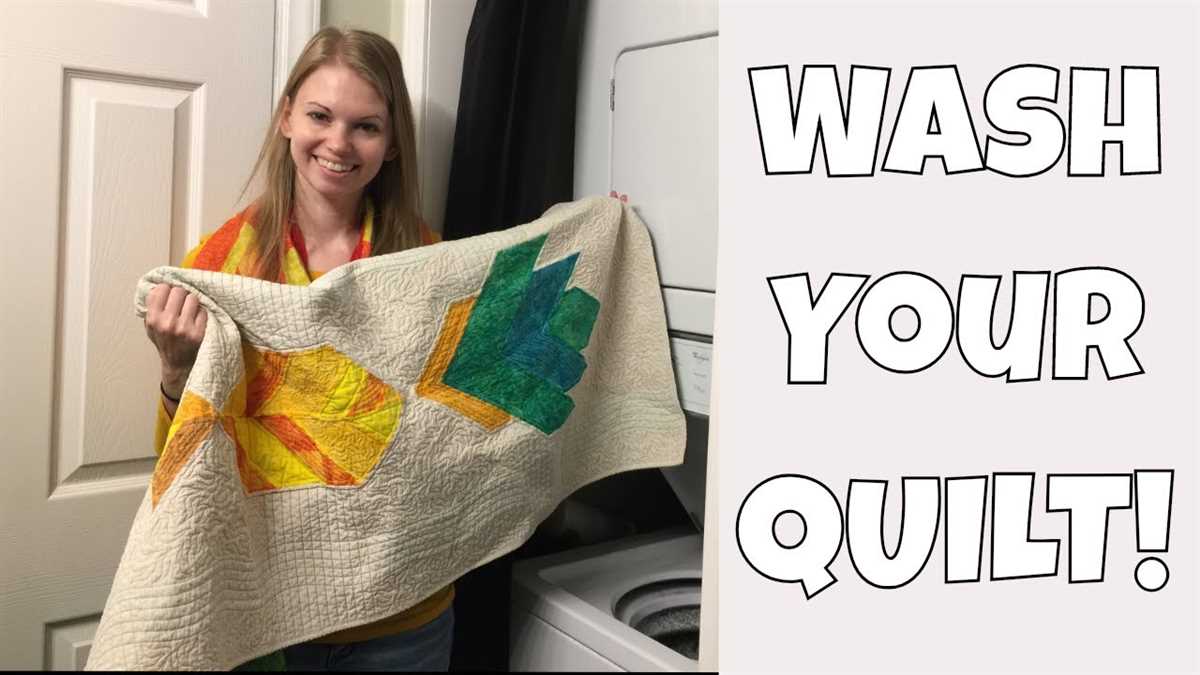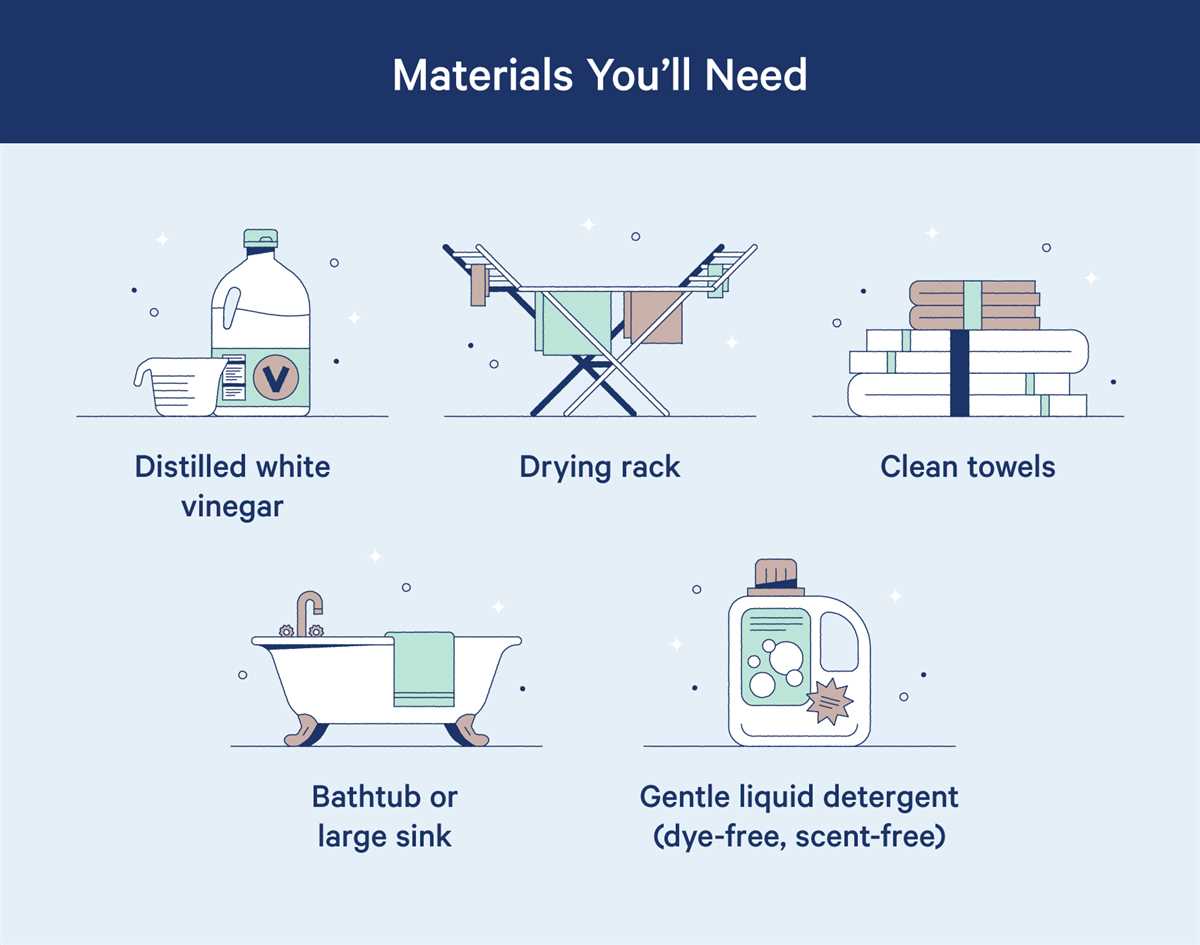




Quilts are beautiful and functional pieces of art that bring warmth and comfort to any home. Whether you have a handmade heirloom quilt or a store-bought one, it’s important to keep them clean and well-maintained. One common question that many people have is whether quilts can be washed. The answer is yes, most quilts can be washed, but there are some important factors to consider in order to properly clean and care for your quilts.
Firstly, it’s important to read the care instructions provided by the manufacturer or the quilt maker. These instructions will give you specific guidelines on how to clean your quilt without causing any damage. Some quilts may be machine washable, while others may require hand washing or dry cleaning. It’s important to follow these instructions to avoid ruining the quilt’s fabric or structure.
If your quilt is machine washable, it’s recommended to use a gentle cycle with cold water and a mild detergent. Avoid using bleach or harsh chemicals, as they can damage the fabric and colors. It’s also a good idea to turn the quilt inside out before washing to protect the outer surface. To prevent tangling and possible damage, it’s best to wash quilts on their own or with similar fabrics.
For quilts that require hand washing, fill a bathtub or large basin with cool water and a gentle detergent. Gently agitate the quilt in the water, being careful not to wring or twist it. After rinsing, carefully squeeze out excess water without wringing. Dry the quilt flat on a clean surface, away from direct sunlight or heat sources to prevent fading or shrinking.
Can You Wash Quilts?
So, you’ve just finished making a beautiful quilt, or perhaps you’ve inherited a cherished family heirloom quilt. But now you’re left wondering, can you wash quilts? The answer is yes, you can wash quilts, but with caution and care.
Before proceeding with washing your quilt, it’s important to check the care instructions provided by the quilt maker or the manufacturer. Some quilts may have specific cleaning instructions that you need to follow to prevent any damage.
Here are some general tips and tricks for safely washing your quilts:
- Pre-treat stains: Before washing your quilt, it’s a good idea to pre-treat any stains or spots. You can use a gentle stain remover or a mild detergent, but make sure to test it on a small, inconspicuous area of the quilt first to ensure it won’t cause any discoloration.
- Choose a gentle cycle: When washing your quilt, opt for a gentle cycle on your washing machine. Use cold water and mild detergent specifically designed for delicate fabrics. Avoid using bleach or harsh chemicals, as they can cause damage to the quilt’s colors and fibers.
- Avoid machine drying: It’s generally recommended to air dry quilts instead of using a machine dryer. Hang the quilt outside or lay it flat on a clean surface indoors. Avoid direct sunlight, as it can cause fading. Make sure to periodically flip the quilt to promote even drying.
- Handle with care: When washing or drying the quilt, be gentle to avoid stretching or pulling. Support the weight of the quilt with your hands, and avoid wringing or twisting it.
- Consider professional cleaning: If your quilt is particularly delicate or valuable, you may want to consider professional cleaning. Experienced cleaners have the expertise and the necessary equipment to ensure your quilt is safely and effectively cleaned.
By following these tips and tricks, you can keep your quilts clean and in good condition for years to come. Remember to always prioritize the care instructions provided by the quilt maker or manufacturer, as they may have specific recommendations for your quilt. Happy quilting!
Tips and Tricks for Cleaning Your Quilts
Keeping your quilts clean is an important part of their maintenance. Here are some tips and tricks to help you clean your quilts effectively:
1. Read the Care Instructions
Before cleaning your quilt, it is important to read and follow the care instructions provided by the manufacturer. Each quilt may have specific cleaning instructions based on the fabric, batting, and embellishments used.
2. Spot Clean Stains
If your quilt has a small stain or spot, you can try spot cleaning it to avoid washing the entire quilt. Use a mild detergent or stain remover and gently blot the stain with a clean cloth. Avoid rubbing the stain, as it may spread or damage the fabric.
3. Hand Wash for Delicate Quilts
For delicate or antique quilts, hand washing is often the best option. Fill a bathtub or large basin with lukewarm water and a gentle detergent. Gently swirl the quilt in the water, taking care not to agitate or wring it. Rinse the quilt thoroughly with clean water and press out the excess water without twisting or wringing the fabric.
4. Machine Wash on a Gentle Cycle
If your quilt can be machine washed, use a front-loading washer on a gentle cycle with a mild detergent. Place the quilt in a laundry bag or pillowcase to protect it from getting tangled in the machine. Use cold water and avoid using fabric softeners or bleach.
5. Dry Flat or Line Dry
Drying quilts in a dryer can cause them to shrink or become misshapen. It is best to dry quilts flat on a clean surface or hang them on a clothesline to air dry. Avoid direct sunlight, as it may cause fading. Flip the quilt occasionally during the drying process to ensure even drying.
6. Store Clean and Dry
Once your quilt is clean and dry, store it in a cool, dry place away from direct sunlight and moisture. Avoid folding the quilt in the same place every time to prevent creases and consider using acid-free tissue paper to prevent color transfer.
By following these tips and tricks, you can keep your quilts clean and in good condition for years to come.
The Importance of Proper Care
Proper care is essential to maintain the quality and longevity of your quilts. By following a few simple tips and tricks, you can ensure that your quilts stay clean and in pristine condition for years to come.
Regular Cleaning
Regular cleaning is vital to remove dust, dirt, and stains from your quilts. Depending on the material and construction of the quilt, you can either hand-wash or machine-wash it. It is important to check the care instructions provided by the manufacturer before deciding which method to use.
Hand-washing Quilts
If your quilt is delicate or made with sensitive fabrics, hand-washing is recommended. Fill a bathtub or sink with lukewarm water and a gentle detergent. Gently agitate the quilt in the water, ensuring that all areas are thoroughly cleaned. Rinse the quilt with clean water until all the soap is removed.
Machine-washing Quilts

If your quilt is made with durable materials and is machine-washable, you can use a washing machine. Place the quilt in a front-loading machine to avoid excessive agitation and potential damage. Use a gentle cycle with a mild detergent, and avoid using fabric softeners or bleach.
Drying Quilts
After washing, it is important to dry your quilt properly to prevent mold and mildew growth. Avoid using a dryer, as it can cause shrinkage or damage to the quilt’s fibers. Instead, hang the quilt to air dry in a well-ventilated area away from direct sunlight.
Storage
When not in use, it is essential to store your quilts properly to prevent damage. Before storing, ensure that the quilt is completely dry and clean. Fold the quilt gently to avoid creasing and place it in a clean cotton or muslin bag to protect it from dust and pests.
Professional Cleaning

If your quilt is an heirloom or made with delicate or intricate details, it is advisable to seek professional cleaning services. Professional cleaners have the expertise and experience to clean and preserve quilts without causing any damage.
By giving your quilts the proper care they deserve, you can enjoy their beauty and warmth for many years. Following these tips will help keep your quilts clean, fresh, and in excellent condition for future generations to admire.
Preparation for Washing
Before washing your quilt, there are a few important steps you should take to ensure the best results:
- Read the care instructions: Check the label on your quilt to see if there are any specific washing instructions. Some quilts may require special care, such as hand-washing or dry cleaning, so it’s important to follow these instructions to avoid damaging the quilt.
- Remove any loose threads: Before washing, carefully inspect your quilt for loose threads or threads that may have unraveled. Gently trim these threads to prevent further damage during the washing process.
- Pre-treat stains: If your quilt has any stained areas, it’s a good idea to pre-treat them before washing. Follow the instructions on your chosen stain remover product and apply it directly to the stained areas. Let the product sit for the recommended amount of time before washing.
- Mend any tears or holes: If your quilt has any tears or holes, consider mending them before washing. Use a needle and thread that matches the color of the quilt, and carefully stitch up the damaged areas to prevent further tearing during the washing process.
- Choose a gentle detergent: When selecting a detergent for washing your quilt, opt for a gentle, fragrance-free detergent. Harsh detergents and strong fragrances can be abrasive to the delicate fabric of quilts and may cause damage or fading.
- Choose the right water temperature: Quilts can be washed in either cold or warm water, depending on the specific care instructions. Cold water is generally the safest option to prevent color bleeding and fabric shrinkage. However, if the care instructions indicate warm water is acceptable, you can use it instead.
- Select an appropriate washing machine cycle: If your quilt is machine washable, choose a gentle or delicate cycle to minimize agitation and protect the fabric. Avoid using the regular or heavy-duty cycles, as they can be too rough.
By following these steps, you can ensure that your quilt is properly prepared for washing and minimize the risk of damage. Taking the time to prepare your quilt correctly will help keep it looking beautiful and prolong its lifespan.
Washing Your Quilts
Quilts are beautiful and intricate creations that often require special care when it comes to cleaning. Here are some tips and tricks for safely washing your quilts:
Check the Care Instructions

Before washing your quilt, it’s important to check the care instructions provided by the manufacturer or the quilt’s creator. Some quilts may have specific cleaning requirements that you need to follow to avoid damaging the fabric or the stitching.
Pre-Treat Stains
If your quilt has any stains, it’s important to pre-treat them before washing. Use a mild stain remover or a gentle laundry detergent and gently dab the stain, being careful not to rub it in or spread it further. Allow the product to sit for a few minutes to penetrate the stain before proceeding with the wash.
Hand Wash or Machine Wash?
Depending on the quilt’s fabric and construction, it may be best to either hand wash or machine wash it. Hand washing is generally recommended for delicate or vintage quilts, while machine washing can be suitable for more robust quilts. Be sure to follow the care instructions and use gentle detergents.
Use a Mild Detergent
When washing your quilt, opt for a mild detergent that is specifically designed for delicate fabrics. Harsh detergents can strip away the colors or weaken the fabric over time. Look for a detergent that is pH balanced and free from bleach or brightening agents.
Choose a Gentle Cycle

If you decide to machine wash your quilt, select a gentle or delicate cycle with cold water. Avoid using high-speed spins or agitators, as they can cause unnecessary stress on the fabric and stitching. Ensure that the quilt has enough room to move freely in the washer.
Avoid Overloading the Washer
It’s important not to overload your washer when washing a quilt. This can lead to insufficient cleaning and cause unnecessary strain on the quilt. If the quilt is large or bulky, consider washing it separately or with similar items that won’t cause friction or damage.
Don’t Tumble Dry

Quilts should not be tumble dried as the heat and agitation can cause shrinkage, distortion, or damage to the fabric and quilting. Instead, lay the quilt flat to air dry, preferably on a clean surface or a drying rack. To speed up the drying process, you can periodically flip the quilt or use a fan.
Handle with Care
When washing and drying your quilt, handle it with care to avoid stretching or pulling on the fabric or stitching. Avoid wringing out the quilt or hanging it with clothespins, as this can lead to distortion or damage. Gently lift and support the quilt when transferring it to avoid straining the stitching.
Consider Professional Cleaning
If you have a valuable or intricately designed quilt, or if you’re unsure about washing it yourself, it may be best to seek professional cleaning services. Professional cleaners have the expertise and equipment to safely clean and preserve your quilt without causing any damage.
By following these tips and tricks, you can safely wash and maintain the beauty of your quilts for years to come. Remember to always check the care instructions and handle your quilts with care to ensure their longevity.
Drying and Storing

Properly drying and storing your quilts is crucial to maintaining their quality and longevity. Here are some tips to help you ensure your quilts stay in excellent condition:
Drying
After washing your quilt, it’s important to dry it thoroughly before storing or using it again. Here’s how you can do it:
- Gently press out excess water from the quilt by rolling it in a clean towel. Avoid wringing or twisting the quilt, as this can damage the delicate fibers.
- Place the quilt flat on a clean, dry towel or on a flat and breathable surface, away from direct sunlight.
- Flip the quilt occasionally to ensure even drying. This will help prevent any moisture from being trapped within the layers.
- Avoid hanging the quilt to dry, as this can cause it to stretch and lose its shape.
Storing
When your quilt is completely dry, you can store it to protect it from dust, sunlight, and pests. Follow these guidelines:
- Use a clean and breathable storage container, such as a large cotton or linen pillowcase.
- Avoid using plastic bags or containers, as they can trap moisture and promote mildew or mold growth.
- Ensure the storage container is free from any oils or chemicals that could transfer onto the quilt.
- Place acid-free tissue paper between folds to prevent creases and help maintain the quilt’s shape.
- Store the quilt in a cool, dry, and dark place, away from direct sunlight and extreme temperature changes.
- Periodically check the quilt for any signs of damage, pests, or mold, and take appropriate action if needed.
By following these drying and storing tips, you can help preserve the beauty and integrity of your quilts for many years to come.
FAQ
Can I wash my quilt in the washing machine?
Yes, you can wash most quilts in the washing machine. However, it’s important to check the care instructions for your specific quilt to ensure it can be machine washed. Some quilts may require hand washing or dry cleaning.
What is the best way to clean a quilt?
The best way to clean a quilt is to follow the care instructions provided by the manufacturer. In general, it is recommended to wash quilts on a gentle cycle using a mild detergent. Avoid using bleach or harsh chemicals as they can damage the fabric. After washing, air drying is usually the best option to prevent shrinking or distortion of the quilt.
Can I use a dryer to dry my quilt?
It is generally not recommended to use a dryer to dry quilts, especially if they are made with delicate fabrics or have intricate stitching. Tumble drying can cause the quilt to shrink, distort the shape, or damage the stitching. It is best to air dry quilts by laying them flat or hanging them up.
What should I do if my quilt gets stained?
If your quilt gets stained, it is important to treat the stain as soon as possible. First, check the care instructions for the quilt to determine the best method for stain removal. In most cases, you can gently blot the stain with a mild detergent or stain remover. Avoid rubbing the stain, as this can push it deeper into the fabric. If the stain persists, you may need to take the quilt to a professional cleaner for further treatment.












